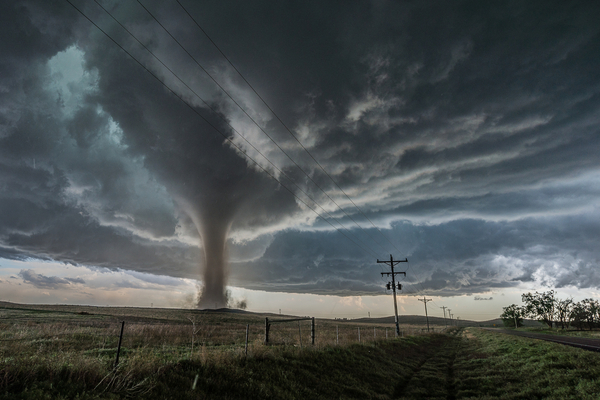Despite being less than a month into the new year, tornado records are already close to falling after an unusually high number of twisters touched down during intense rounds of severe weather across the country.
The National Weather Service’s Storm Prediction Center estimates between 140 and 165 tornadoes touched down from the start of the year through January 26. While that number will change before it is finalized, as duplicate reports are removed and additional reports are uncovered, the high end is nearly four times the typical amount for January tornadoes.
According to AccuWeather meteorologists, if January 2023 finishes with more than 137 confirmed tornado reports, it would become the second-most active on record in terms of tornadic activity. Only January 1999, which had 214 tornadoes, would rank higher.
Although tornado reports for the month so far have been mostly confined mostly to the southeastern United States, there have been several exceptions. On Jan. 10, a brief EF1 tornado touched down near Milton, California, causing extensive tree damage. Milton is located about 50 miles southeast of Sacramento.
Tornadoes were also spotted in Iowa and Illinois over the course of the month. The first tornado in Iowa became the earliest in a calendar year that a tornado was reported in the state on record.
The largest outbreak of the month occurred on January 12th, when 70 tornadoes across seven states were reported. This date included two EF3 tornadoes that resulted in at least 9 deaths and 34 injuries across Alabama and Georgia.
“It is generally uncommon to see many tornadoes in January,” states AccuWeather Lead Long-Range Meteorologist Paul Pastelok. On average, January is the third least tornadic month, with three of the past five years recording 18 or fewer tornadoes.
From December to February, moisture from the Gulf of Mexico usually doesn’t spread across the country as much as it does during the spring, summer and fall. This typically limits severe weather outbreaks during the winter months to states closer to the Gulf. But as long as waters in the Gulf of Mexico are warmer than normal in the winter, there will typically be a higher risk of tornado development.
“The main factor that has contributed to increased severe weather in the Southern states this January is that the Gulf of Mexico is 3.5 to 5 degrees Fahrenheit above normal. This leads to more low-level moisture and associated instability than would otherwise be available in January,” explained AccuWeather Senior Storm Warning Meteorologist William Clark.
While winter tornadoes remain uncommon, there is always a possibility of a tornado on any date of the year, and they are not limited to just the southeast. Tornado reports have been recorded in states such as Pennsylvania, California, Oregon, Washington, New Jersey and even Hawaii during the month of January.
“No day of the year is zero…. meteorologists always stress that with the right conditions, tornadoes are possible any day of the year almost anywhere in the country,” said AccuWeather Chief Meteorologist Jonathan Porter.
—
Photo Credit: Cammie Czuchnicki / Shutterstock.com
